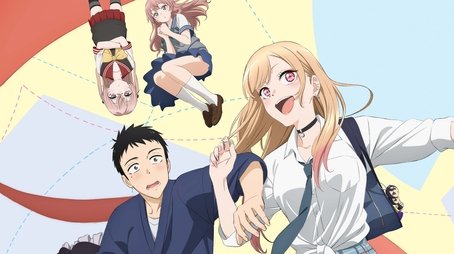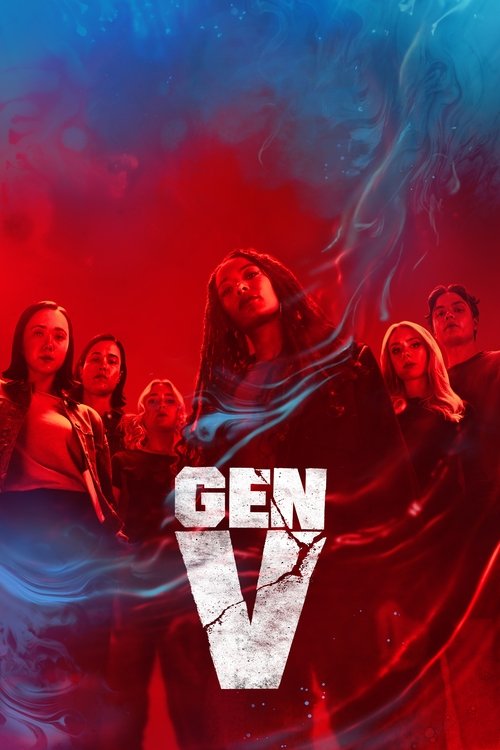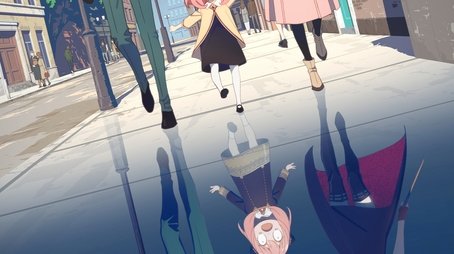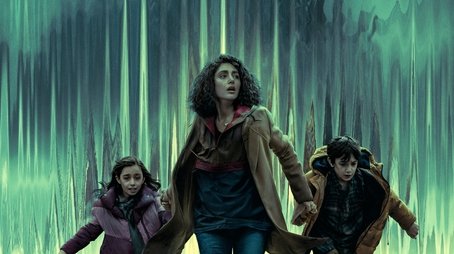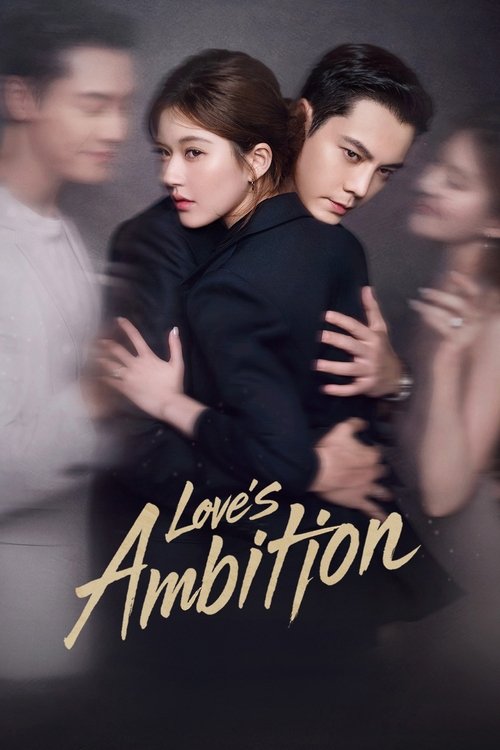
Ask Your Own Question
What is the plot?
Wakana Gojo is a high school student who has a deep passion for making hina dolls, a traditional Japanese craft. He is introverted and struggles to connect with his classmates due to his unique interests. One day, while in the school's sewing room, he meets Marin Kitagawa, a popular and outgoing girl who is known for her love of anime and cosplay. Marin discovers Wakana's sewing skills when she accidentally drops her cosplay costume, which is in disrepair. Intrigued by his talent, she asks him to help her fix it.
Marin reveals her desire to cosplay as her favorite character from a popular game, but she lacks the skills to create the costume herself. Despite his initial hesitation and self-doubt, Wakana agrees to help her, motivated by his admiration for her enthusiasm and beauty. They begin to bond over their shared interests, with Marin encouraging Wakana to step out of his comfort zone.
As they work together, Marin introduces Wakana to the world of cosplay, explaining the importance of accuracy and detail in creating costumes. She shows him reference images and discusses the character's personality, which inspires Wakana to put his all into the project. He becomes more invested in the costume-making process, and they spend time together outside of school, visiting fabric stores and discussing design ideas.
Wakana faces challenges in creating the costume, particularly when it comes to sewing techniques and materials. He experiences moments of self-doubt, fearing that he won't meet Marin's expectations. However, Marin's unwavering support and encouragement help him push through these obstacles. They share light-hearted moments, and their friendship deepens as they learn more about each other's lives and interests.
As the deadline for the cosplay event approaches, Wakana works tirelessly to complete the costume. He meticulously crafts each piece, pouring his heart into the project. Marin, excited about the upcoming event, helps him with the final touches, and they share a sense of accomplishment when the costume is finally finished.
On the day of the cosplay event, Marin arrives at Wakana's house to show off the completed costume. She looks stunning, and Wakana is filled with pride at what they have created together. They head to the event, where Marin receives compliments and admiration from other attendees. Wakana feels a mix of joy and anxiety as he watches her shine in the spotlight.
During the event, Marin encourages Wakana to take photos with her, and he begins to feel more comfortable in the cosplay community. However, he also grapples with his feelings for Marin, realizing that he has developed a crush on her. This internal conflict creates tension as he navigates his emotions while supporting her.
As the event progresses, they encounter other cosplayers, and Marin's confidence grows. She engages with others and showcases her costume, while Wakana remains in the background, feeling proud yet unsure of his place in this vibrant world. Their bond strengthens as they share this experience, but Wakana's insecurities about his own worthiness linger.
After the event, Marin expresses her gratitude to Wakana for his hard work and dedication. She invites him to join her for more cosplay projects in the future, which excites him but also fills him with anxiety about their evolving relationship. They share a heartfelt moment, and Wakana realizes that he wants to continue supporting Marin, both as a friend and as someone who cares for her deeply.
As the story progresses, Wakana and Marin face various challenges, including misunderstandings and the pressures of their respective lives. They navigate their feelings for each other, with Wakana often feeling unworthy of Marin's affection due to their differences in popularity and social status. Despite these challenges, their friendship continues to grow, and they support each other through personal struggles.
Wakana's passion for hina dolls and sewing becomes a central theme, as he learns to embrace his interests and talents. Marin's influence helps him gain confidence, and he begins to see the value in his skills. Their relationship evolves, leading to moments of vulnerability and connection as they confront their fears and insecurities together.
In the climax of the story, Wakana faces a significant decision regarding his future and his relationship with Marin. He must confront his feelings and decide whether to take a leap of faith in pursuing a deeper connection with her. This moment of self-discovery leads to a turning point in their relationship, as they both acknowledge their feelings and the bond they have built through their shared experiences.
The series concludes with a sense of hope and possibility for both characters. Wakana embraces his passion for sewing and cosplay, while Marin continues to inspire him to be true to himself. Their journey together highlights the importance of friendship, self-acceptance, and the courage to pursue one's dreams, leaving viewers with a heartwarming sense of fulfillment.
What is the ending?
In the ending of "My Dress-Up Darling," Marin and Wakana share a heartfelt moment at a cosplay event, solidifying their bond. Marin expresses her gratitude for Wakana's support and talent, while Wakana realizes his feelings for her have deepened. The series concludes with a sense of hope for their future together, as they continue to pursue their passions.
As the final episode unfolds, the scene opens at a bustling cosplay event, vibrant with color and energy. The camera pans over the crowd, capturing the excitement and creativity of attendees dressed as their favorite characters. Among them, Marin Kitagawa stands out in her meticulously crafted costume, a testament to the hard work and dedication she and Wakana Gojo have put into their project. Her eyes sparkle with joy as she poses for photos, embodying the character she loves.
Wakana, standing slightly off to the side, watches Marin with a mix of pride and admiration. He is dressed in a simple outfit, but his demeanor reflects a newfound confidence, having embraced his skills as a craftsman. As he observes Marin, he feels a swell of emotions--his admiration for her passion intertwines with a deeper affection that has blossomed throughout their time together.
The scene shifts to Marin, who, after finishing a photo session, approaches Wakana with a bright smile. She thanks him for all the effort he put into her costume, emphasizing how it has allowed her to express herself fully. Her gratitude is palpable, and Wakana feels a warmth in his chest, realizing how much their collaboration has meant to him. He stammers a response, his cheeks flushing slightly, revealing his bashfulness in the face of her praise.
As they walk through the event together, Marin excitedly points out other cosplayers, sharing her thoughts on their costumes and the characters they represent. Wakana listens intently, his heart racing as he watches her animated expressions. He reflects on how much he has grown since they first met, feeling more comfortable in his own skin and more connected to Marin than ever before.
The atmosphere shifts as they find a quiet corner away from the crowd. Marin turns to Wakana, her expression serious yet soft. She confesses that this experience has been one of the happiest times in her life, and she feels grateful to have him by her side. Wakana, taken aback by her sincerity, struggles to find the right words. He finally admits that he has developed feelings for her, a confession that hangs in the air between them, charged with emotion.
Marin's eyes widen in surprise, but then a smile breaks across her face. She admits she feels the same way, and the two share a moment of vulnerability, acknowledging the bond they have formed through their shared passion for cosplay. The scene captures their connection, a blend of friendship and budding romance, as they stand close together, the world around them fading into the background.
As the event comes to a close, the camera captures the two of them walking hand in hand, a symbol of their newfound relationship. They discuss their future plans, both in cosplay and in life, expressing excitement about what lies ahead. The final moments of the episode show them laughing together, their spirits high, as they step into the future, ready to face whatever challenges may come their way.
In the closing scene, the screen fades to black, leaving viewers with a sense of hope and fulfillment. Marin and Wakana's journey has not only been about cosplay but also about personal growth, acceptance, and the beauty of forming deep connections with others. The series ends on a note of optimism, suggesting that their story is just beginning, with endless possibilities ahead.
Who dies?
In the TV show "My Dress-Up Darling," produced in 2022, there are no character deaths. The series primarily focuses on the relationship between the main characters, Wakana Gojo and Marin Kitagawa, as they explore the world of cosplay and their personal growth. The narrative centers around their creative endeavors, emotional connections, and the challenges they face in pursuing their passions, rather than any themes of death or loss. The story is light-hearted and emphasizes friendship, creativity, and self-acceptance, making it a feel-good series without any tragic elements involving character fatalities.
Is there a post-credit scene?
In the anime "My Dress-Up Darling," there is indeed a post-credit scene that adds a light-hearted touch to the series. After the main credits roll, the scene features a playful interaction between the two main characters, Wakana Gojo and Marin Kitagawa.
In this scene, Marin is seen enthusiastically trying on various cosplay outfits that Gojo has made for her. The atmosphere is filled with laughter and excitement as she poses dramatically in front of a mirror, showcasing her vibrant personality. Gojo, who is initially shy and reserved, watches her with a mix of admiration and nervousness, his cheeks slightly flushed.
Marin's infectious energy contrasts with Gojo's more subdued demeanor, highlighting their growing friendship and the bond they have formed through their shared passion for cosplay. The scene captures the joy of creativity and the thrill of bringing characters to life, emphasizing the emotional connection they have developed throughout the series.
As Marin continues to model the outfits, she playfully teases Gojo about his craftsmanship, prompting him to blush even more. The scene ends on a light note, reinforcing the themes of friendship and self-expression that are central to the story. This post-credit moment serves as a delightful reminder of the fun and warmth that characterizes their relationship, leaving viewers with a smile.
What motivates Wakana Gojo to help Marin Kitagawa with her cosplay?
Wakana Gojo is initially motivated by his passion for hina dolls and craftsmanship, but as he spends time with Marin Kitagawa, he becomes inspired by her enthusiasm for cosplay. He admires her confidence and creativity, which ignites a desire in him to support her and express his own skills in sewing and design.
How does Marin Kitagawa's character develop throughout the series?
Marin Kitagawa starts as a confident and outgoing high school girl who is unapologetically herself, but as she collaborates with Wakana Gojo, she reveals deeper layers of vulnerability and insecurity, particularly regarding her appearance and the pressures of fitting in. Her relationship with Gojo helps her embrace her true self and encourages her to pursue her passions more openly.
What challenges do Wakana and Marin face while creating costumes together?
Wakana and Marin encounter several challenges, including the technical difficulties of sewing and crafting intricate costumes, Marin's initial lack of knowledge about the cosplay process, and the pressure of meeting expectations for conventions. These challenges test their teamwork and communication, ultimately strengthening their bond as they learn to overcome obstacles together.
How does the relationship between Wakana and Marin evolve throughout the series?
Wakana and Marin's relationship evolves from a simple friendship based on shared interests to a deeper emotional connection. As they work closely on cosplay projects, they begin to understand each other's insecurities and dreams, leading to moments of intimacy and vulnerability that hint at romantic feelings developing between them.
What role does Wakana's grandfather play in his life and how does it affect his character?
Wakana's grandfather plays a significant role in his life as a mentor and source of inspiration for his craftsmanship. The grandfather's encouragement of Wakana's passion for hina dolls instills a sense of pride and responsibility in him. However, the pressure to uphold family traditions also creates internal conflict, as Wakana struggles to balance his own interests with the expectations placed upon him.
Is this family friendly?
"My Dress-Up Darling" is generally considered suitable for a teen audience, but it does contain some elements that may be objectionable or upsetting for children or sensitive viewers. Here are a few aspects to consider:
-
Suggestive Themes: The show features scenes that include suggestive dialogue and situations, particularly related to cosplay and the characters' interactions, which may not be appropriate for younger viewers.
-
Fan Service: There are moments of fan service, including character designs and poses that emphasize physical attributes, which could be uncomfortable for some audiences.
-
Romantic Tension: The relationship dynamics between characters can include romantic tension and emotional complexities that might be difficult for younger viewers to fully understand.
-
Personal Struggles: Characters deal with personal insecurities and societal pressures, which may resonate with older teens but could be distressing for younger children.
-
Mature Conversations: Some conversations touch on topics like self-image, acceptance, and the pressures of fitting in, which may require a level of maturity to process.
Overall, while the series has a light-hearted premise centered around cosplay and creativity, these elements may warrant parental guidance for younger audiences.

